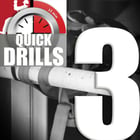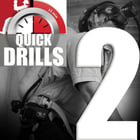 6-10-14 Update on Petzl CROLL Potential Safety Issues
6-10-14 Update on Petzl CROLL Potential Safety Issues
After Petzl met with their distributors regarding the Petzl CROLL (B16 & B16AAA) issue, they have provided us with the following statements:
• Estimated devices that would potentially be exposed to this event is less than 1 in 100,000 devices produced.
• The exposure was only documented in three known devices which were all the old style CROLL (Petzl has redesigned the CROLL and no longer produces the previous generation).
• Petzl has determined that the specific deficiency in devices could only come from either corrosion due to exposure to grain silo work, or from over use of the device (in the primary case it was determined that the device should have been retired at least a year prior to incident).
• After months of testing in various conditions and states of use, Petzl has not been able to replicate the condition documented with these devices in question.
Petzl has redesigned the CROLL to have a stainless steel cam as well as stainless steel reinforcement in the rope channel which attaches to the riveted portion of the device to ensure that there will be no replication of the events that occurred to the three older generation devices. Petzl also has no warranted reason to issue a recall of this device at present or in the near future.
Previous Post:
Roco Rescue has recently learned there are potential safety issues regarding the Petzl Croll (B16 & B16AAA). According to Petzl, two different customers have informed them of the failure of the rivet head on two Petzl Croll rope clamps. Although neither of these failures have led to an accident, the Petzl technical team is urgently reviewing this issue with in-depth investigations to understand what exactly caused these failures.
Petzl wants to remind consumers that "when connected to a rope device, the user must have a back-up device or a connection to a second rope clamp as a secondary means of support." They also encourage that users thoroughly inspect their CROLL B16 & B16AAA to ensure that the rivet head is not missing. The results of this investigation will be released no later than April 18th.
NOTE: This notice does not affect similar products such as the CROLL B16BAA, ASCENSION or PANTIN. With the facts known today it currently only affects the old CROLL B16 and B16AAA that were produced in 2012.
Stay connected to Roco Rescue for your latest news on this issue.
http://www.petzl.com/us/pro/safety-information-croll-B16AAA-us



 As an emergency responder, it is important to have a good understanding of the dangers and precautions regarding hazardous chemicals. Whether you’re a member of an in-plant industrial team or a municipal fire department, chemical hazards are always a critical factor in emergency incidents. That’s why it’s imperative to identify any particularly hazardous chemicals in your response area. Learn as much as you can, before the emergency happens.
As an emergency responder, it is important to have a good understanding of the dangers and precautions regarding hazardous chemicals. Whether you’re a member of an in-plant industrial team or a municipal fire department, chemical hazards are always a critical factor in emergency incidents. That’s why it’s imperative to identify any particularly hazardous chemicals in your response area. Learn as much as you can, before the emergency happens.







